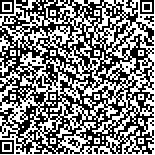| 摘要: |
| 本研究获得了中国北方近海习见水母类24个种共62条线粒体细胞色素C氧化酶亚基I(mtCOI)序列, 结合GenBank中具DNA条形码关键词的mtCOI序列, 共比较了水母类mtCOI片段207 条, 水母mtCOI种内遗传差异在0%—7.4%之间,均值为0.9% (SD=0.014), 其中约93% 的个体种内差异小于4%; 近源种间遗传差异在5.4% (Sarsia)到44.9% (Lensia)之间, 均值为25.1% (SD=0.118), 97% 以上的个体种间遗传差异大于10%。绝大多数(98.8%)水母种类种内遗传差异小于种间遗传差异, 条形码间隙明显。本研究涉及的中国北方习见水母种内遗传差异均显著小于种间遗传差异, 结果表明以mtCOI作为DNA条形码可以实现对中国北方习见水母种类鉴定。利用DNA条形码序列分析, 梳理了中国近海一些常见水母的分类地位。此外, 对4 种保存液保存方法的比较研究表明, 90% 乙醇、 DMSO、RNA Safer 和DNA Conserver 4 种保存液无法同时保存形态学特征和DNA 序列, 但 DNA Conserver 的效果相对较好。 |
| 关键词: 条形码间隙, 种类鉴定, DNA 条形码, 水母 |
| DOI:10.11693/hyhz201203008008 |
| 分类号: |
| 基金项目:国家重点基础研究发展计划(973)项目, 2011CB403601 号; 中国科学院知识创新工程重要方向项目群,KZCX2-YW-Q07 号; 国家自然科学基金项目, 41106133 号; 国家海洋公益性行业科研专项经费项目, 201005018 号 |
附件 |
|
| DNA BARCODING OF COMMON MEDUSOZOA IN NORTHERN CHINA BASED ON mtCOI SEQUENCE |
|
CHENG Fang-Ping1,2, WANG Min-Xiao1, WANG Yan-Tao1,2, ZHANG Fang1, LI Chao-Lun1, SUN Song1
|
|
1.Key Laboratory of Marine Ecology and Environmental Sciences , Jiaozhou Bay Marine Ecosystem Research Station, Institute of Oceanology, Chinese Academy of Sciences;2.Graduate University, Chinese Academy of Sciences
|
| Abstract: |
| Sixty-two mtCOI sequences were determined for 22 medusozoa species sampled from the northern Chinese inshore regions. Two hundred and seven sequences, including 164 additional mtCOI genes from GenBank were compared to test the utility of this molecular marker for species identif ications. The intraspecific variation of the gene ranged from 0 to 7.4% (p-distance), with the average of 0.9% (SD=0.014). More than 93% the pairwise comparisons gave the divergence smaller than 4%. Meanwhile, the counterpart between species within the same genera ranged from 5.4% (Sarsia) to 44.9% (Lensia), with the average of 25.1% (SD=0.118). More than 97% of the variations were larger than 10%. For all the species collected in China, no overlap was observed between the variations within and among species. In conclusion, the barcode gap, which ensured that cox1 sequences can be used as reliable characters for species identification, can be determined in our study. Monophyly of each species was resolved in a neighbour joining tree based on mtCOI genes, which confirmed the efficiency of mtCOI for species identification. The proposals to conserve jellyfish samples were tested. No candidate pro-tocol could keep morphologial keys for species identification for a long time. However, DNA conserver solution was preferred owing to its better performance on maintaining both molecular and morphological features. Furthermore, the tax-onomies of blooming jellyfishes in China were checked using DNA barcodes. |
| Key words: Barcode gap, Species identification, DNA barcoding, Medusa |
